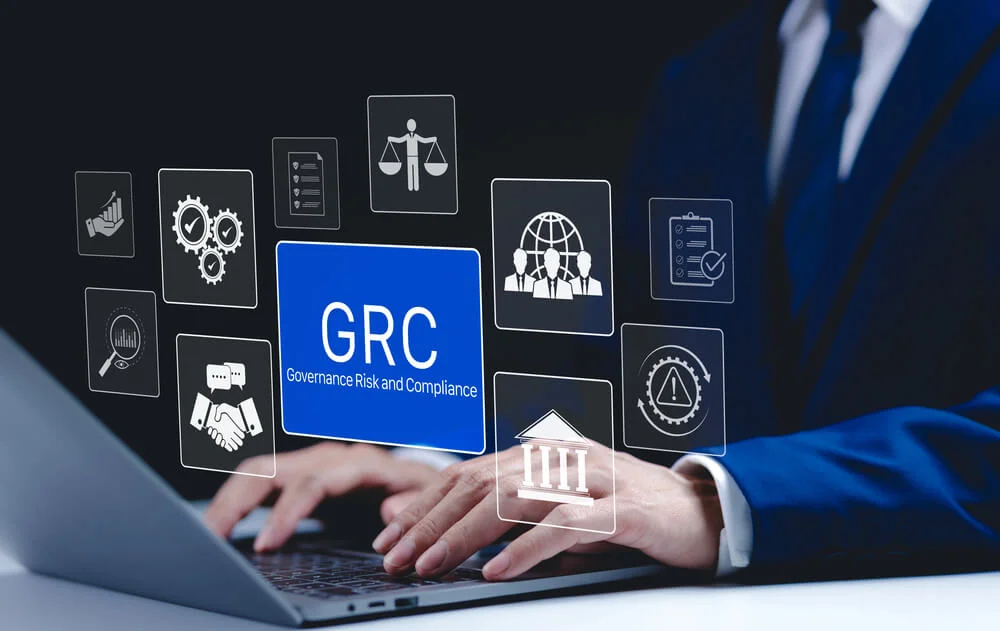The Risk Management Lifecycle Explained
The risk management lifecycle in any organization aims to find areas of possible risk, eliminate them before they happen, and mitigate them when they occur. While there are specific types of risk management that apply to every part of your organization, financial risk management often comes with singular challenges.
As a workflow automation platform, Compyl can assist busy professionals in meeting their industry’s regulations so as not to leave areas of exposure in the risk lifecycle. Learn more about these areas of threat to your business and understand how automating certain tasks can fill gaps in the risk management process and protect your company as a whole.

What Is the Risk Management Lifecycle?
When it comes to business and finance, risk is unavoidable. Managing it, and understanding how to best mitigate it when it does happen, can be vital to a company’s success. While all companies will have their own priorities when it comes to risk management, the following steps should be your basic framework for risk awareness, mitigation, and prevention.
1. Identify the Potential Risks to Your Organization
The first step to having a successful risk lifecycle is identifying which parts of your company may be at risk. Many of these areas are industry-specific. For example, if you employ workers who operate heavy machinery, you are undertaking a certain level of risk in their safe handling of these implements.
On the other hand, if you work in a tightly regulated field, your possible risks may center on compliance or legal pitfalls. If you work in the financial sector, looking out for inadequately managed cash flow, areas that do not have an appointed manager or lead, and payroll inconsistencies are potential risks you should take into account.
2. Analyze the Risks
During the risk management lifecycle, you may be making decisions alone or with business partners. It’s important that everyone in the room is speaking the same language when it comes to analyzing the risks you’ve found. Determine which risks are the highest priority (which may stem from a recent breach or weak area) and assess the damage they could cause to your organization in a worst-case scenario.
It may be tempting to include only quantitative measurements during this step, such as revenue flow, but it’s crucial to take into account qualitative measures as well, such as your team’s perception of which risks are the most important to address. While qualitative measures are often easier to spot and implement due to their lack of objective metrics, quantitative measures in risk assessment are driven by data, statistics, and details. You will need to use both approaches in your risk management lifecycle.
3. Plan Your Risk Mitigation Strategies
If you owned a company in a location where hurricanes frequently occurred, part of your risk management strategy would be planning to keep both your physical business and your employees safe during these events. Financial management incidents can be similarly unpredictable, but the health of your organization often depends on planning for the worst-case scenario.
Determine the “most likely” risk events and plan a detailed strategy for how to handle them with your business partners or managers. While it’s good to hope for an ideal outcome, everyone on your team should understand how to handle these situations should they occur.
4. Implement Your Risk Management Lifecycle Plans
After carefully planning for potential pitfalls in your sector, you and your team should understand which steps to take in the event of an incident. Your plans to implement may fall under four categories:
- Avoiding the problem: This is the best-case scenario that involves spotting the issue far enough ahead of time to sidestep it entirely.
- Sharing the risk: Does your company have insurance? This is often one of the best ways to transfer part of the risk onto another entity — but it must be put in place well before disaster strikes.
- Mitigating the risk: You won’t be able to plan for everything, but with a solid mitigation plan in place, you can dilute the impact of an incident.
- Absorb the risk: Occasionally, a risk will pose a minimal threat to your company and you may wish to let it happen rather than using resources to fight it.
5. Assess and Track Your Risk Management Progress
To understand whether your plans have worked, you need a strict monitoring solution in place that can capture data you may otherwise miss. Consider automating parts of your risk lifecycle to make evaluation and assessment easier and quicker.
Compyl’s Place in the Risk Management Lifecycle
Lack of awareness of data can create a potential risk by itself. Many financial managers and business owners choose to automate much of their organization to stay on top of important metrics and regulations while growing their businesses. Consider the following areas:
- Compliance measures: Automated security platforms can assist professionals in staying on top of compliance measures. These may include regulation changes, the employee lifecycle, and vendor onboarding. For organizations that do not yet have a chief information security officer, these platforms can help organize and automate information that goes into your risk management lifecycle.
- Silo elimination: Data silos can add risk by unnecessarily isolating information in “pockets” within a company. Aggregating data and company-wide metrics on a centralized, intuitive platform can allow managers and owners to easily access crucial information.
- Information security: Remote work has become commonplace — and with it, the risk of phishing, scams, and data breaches. An automated security platform continuously monitors data that is easy to forget, which means that it can help raise the alarm in the event of a security incident before it’s too late.
Free Security Assessment Today
Automate Your Risk Management Lifecycle
Whether your organization has existed for decades or you are just finding your stride as a startup, the risk management lifecycle shouldn’t be overlooked. Compyl can help fill the gaps in areas usually managed by a CISO and act as an important part of your team. Get in touch with us today to schedule your demo. We look forward to showing you what our unique security and compliance platform can do for the growth of your organization!




